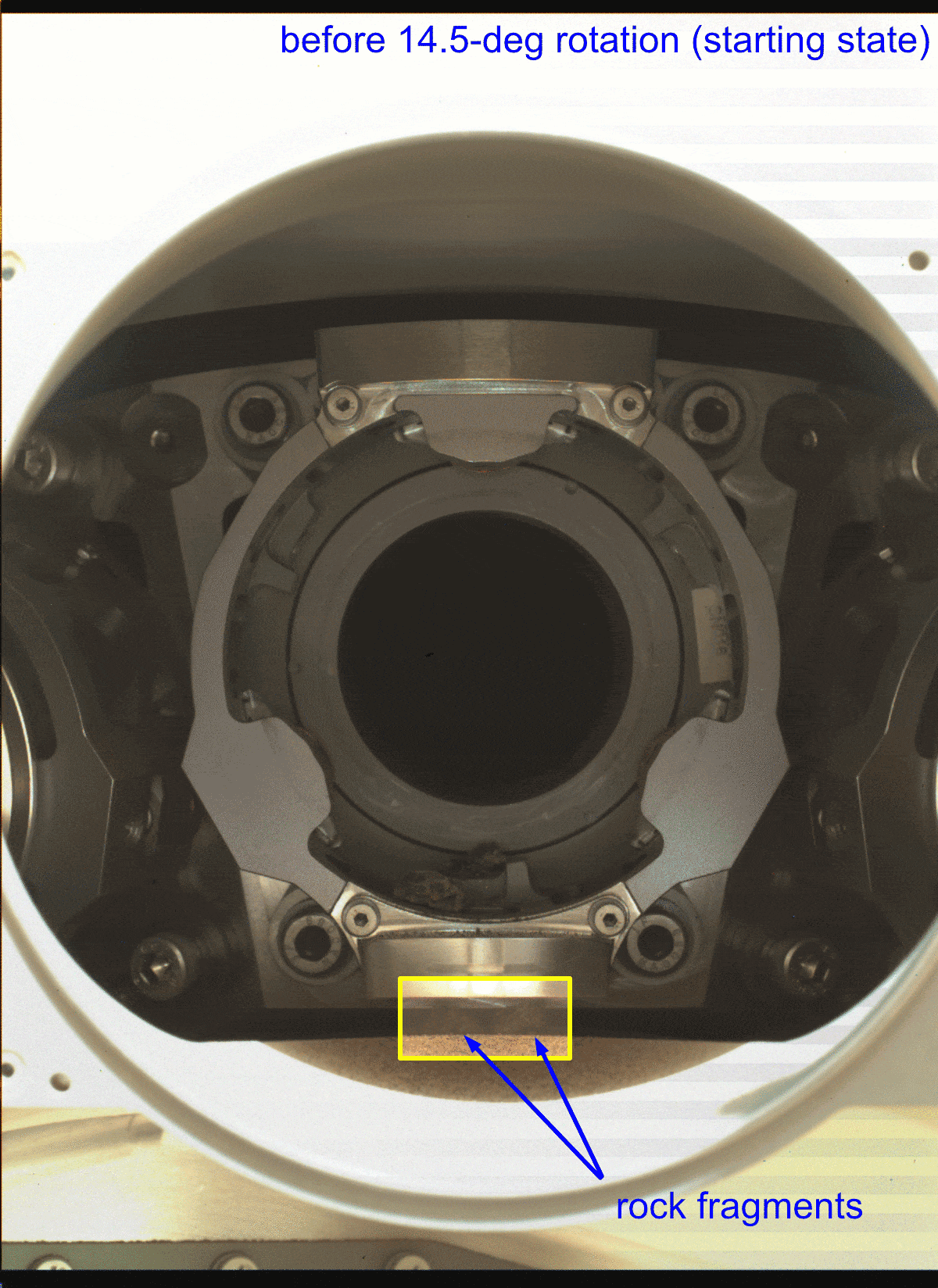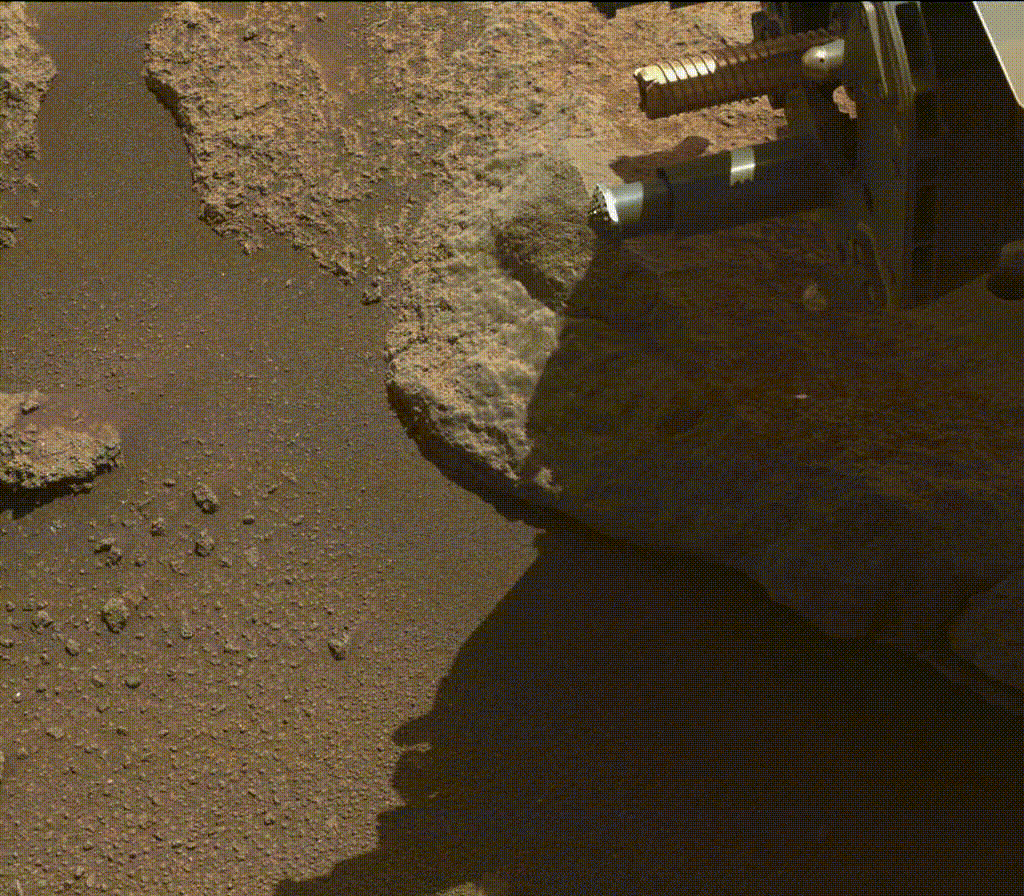As reported by Digital Look, after landing its sixth rock collection on Mars in late December, NASA’s Perseverance rover had a problem: tiny grains of sand and boulders were clogging its sample collection system.
According to the agency, the team in charge of the robot has worked methodically and thoroughly, making good progress in understanding the best way forward for the definitive resolution of the problem.
The implementation of the initial recovery step achieved its first success: the top two stones were removed from the beet carousel during the test procedure.
This is great news as these tiny bits of debris could be the cause of the failed transfer of drill and sample tubes to the carousel in late December.
It doesn’t stop there. According to a NASA statement, it appears that most of the rock remaining in Sample Tube 261 has been removed – or perhaps all of it.

Some samples remain in the blocked collection tube of the Perseverance plow
On Monday, WATSON cameras, the rover’s science instrument, imaged bits of the carousel and its rocks – as well as snapping images of the ground beneath the rover to establish exactly what’s down there before any recovery strategy is launched.
“Later that same day, we rotated the carousel bit by about 75 degrees before returning it to its original position. The WATSON images show that the top two rocks were ejected during the process,” NASA said in a statement.
According to the agency’s scientists, the following day, they received a second set of images of the ground beneath the explorer, which showed two new rocks. This means that rock ejected from the beet carousel was deposited back onto the Martian surface as planned.

Still according to NASA, two other rocks, located at the bottom of the carousel, remain. “It is interesting to note that some of the initial tests carried out on Earth suggest that the location of the two remaining rocks may not pose a significant problem with the operation of the carousel bit, but we are continuing analysis and testing to confirm this.”
On Saturday (15), the team conducted an experiment using the Perseverance rotary percussion drill. After the explorer robotic arm guides the drill bit with the open end of Sample Tube 261 at an angle of approximately 9 degrees below the horizontal, the explorer drill shaft is rotated and then extended.
Read more:
- The video shows a mosaic of images of Mars taken by Perseverance
- In another milestone, Perseverance discovers organic chemicals on Mars
- The Perseverance rover has a twin brother who helps him study Mars from a distance
“Our excellent Mastcam-Z instrument (which has video capabilities previously used to document several Ingenuity flights) recorded the event. Experimental images show a small amount of sample material falling from the drill tube,” explained the team. “Later on the same Martian day, the drill was positioned vertically over the ‘issole’ (the rock that provided the final core) to see if additional samples would fall under the force of gravity.”
However, according to the scientists, Mastcam-Z images taken of the inside of the tube after this maneuver showed that the tube still contained the sample. Given that part of the sample had been lost, the team decided it was time to return the rest to the ground and empty the tube completely to prepare it for another potential collection effort.
Unexpected challenges are part of the mission
Earlier this week, the team ran another rotary-percussion drill operation in an attempt to remove more material from the tube. “With the open end of the tube still pointing at the surface, we essentially shook the rock out of the tube for 208 seconds.” As previously stated, Mastcam-Z images taken after the incident show that some samples were successfully discharged to the surface, and others continued.
The team is still reviewing the data and discussing next steps. “Like all missions to Mars, we had some unexpected challenges,” the agency said in a statement. “We expect the same results this time – by taking additional steps, analyzing the results and moving forward, we plan to fully address these challenges and return to exploration and sampling at Jezero Crater.”
Have you watched our new video on YouTube ? Subscribe to our channel!
Perseverance Rover’s Clogged Collection Tube Cleaning Started Successfully post first appeared on Digital Look.
–


